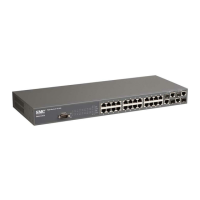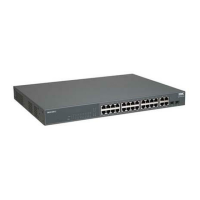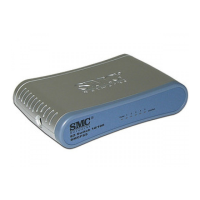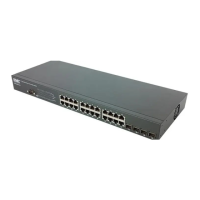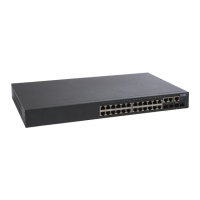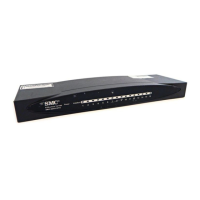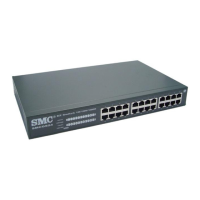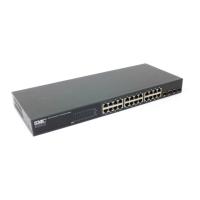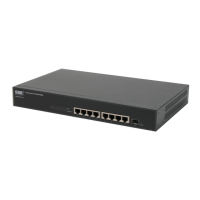IP R
OUTING
17-36
• You can specify the Send Version based on these options:
- Use “RIPv1” or “RIPv2” if all routers in the local network are based
on RIPv1 or RIPv2, respectively.
- Use “RIPv1 Compatible” to propagate route information by
broadcasting to other routers on the network using the RIPv2
advertisement list, instead of multicasting as normally required by
RIPv2. (Using this mode allows RIPv1 routers to receive these
protocol messages, but still allows RIPv2 routers to receive the
additional information provided by RIPv2, including subnet mask,
next hop and authentication information.)
- Use “Do Not Send” to passively monitor route information
advertised by other routers attached to the network.
Loopback Prevention
Just as Layer 2 switches use the Spanning Tree Algorithm to prevent loops,
routers also use methods for preventing loops that would cause endless
retransmission of data traffic. When protocol packets are caught in a loop,
links will be congested, and protocol packets may be lost. However, the
network will slowly converge to the new state. RIP utilizes the following
three methods that can provide faster convergence when the network
topology changes and prevent most loops from occurring:
• Split Horizon – Never propagate routes back to an interface port from
which they have been acquired.
• Poison Reverse – Propagate routes back to an interface port from which
they have been acquired, but set the distance-vector metrics to infinity.
(This provides faster convergence.)
• Triggered Updates – Whenever a route gets changed, broadcast an
update message after waiting for a short random delay, but without
waiting for the periodic cycle.
Protocol Message Authentication
RIPv1 is not a secure protocol. Any device sending protocol messages
from UDP port 520 will be considered a router by its neighbors. Malicious
or unwanted protocol messages can be easily propagated throughout the
network if no authentication is required. RIPv2 supports authentication via
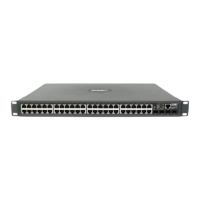
